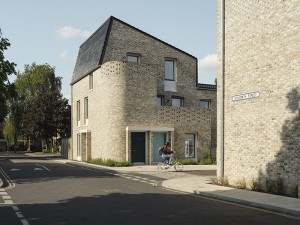The Goldsmith Street council housing scheme in Norwich is a gem of contemporary architecture, a precedent for the direction architecture should take as it wades through the challenges presented by today’s world. More than just a pleasant place to live, the scheme stands up to housing difficulties, faces dilemmas about inequality, and all the while tackles environmental concerns reaching Passivhaus standards.
Sustainability, equality, dignity, character, ecological and social consciousness, and the much-sought-after-but-rarely-achieved Passivhaus standard… we are all compelled by these terms and, in an ideal world, would like to implement them in our homes and our designs.
The truth, however, is that a very small percentage of new builds are willing to raise their standards to meet environmental and social demands, and that most home-owners and developers who do want to respond to these concerns are often deterred by the cost increase or the toll it takes on aesthetic aspirations. Indeed, for many years it seemed that too much had to be given up, that quality design and Passivhaus were a luxury… But then Mikhail Riches designed the Goldsmith Street housing scheme, and the Norwich City Council decided to build it.
Goldsmith Street is not remarkable just because it has achieved Passivhaus for social housing, it is remarkable because it is living proof that budget, design, and environment are not the irreconcilable points of a triangle we thought they were (read an earlier post we wrote on sustainable architecture principles).
This seemingly futile event has had a big impact on British architecture; council houses are constantly being commissioned and built, but few of them manage to have an impact, let alone a game-changing impact, on the way we see the future of architecture. And this is a future that is important to think about: as big cities like London face evermore pressing housing crisis and the effects of the damage to the environment start to be felt globally, it is crucial to identify a direction for architecture that addresses these issues.
The fact that Mikhail Riches’ design has received so many awards is a hopeful sign. To date, it has been bestowed with the RIBA East Award 2019, the RIBA East Client of the Year 2019 for Norwich City Council, the RIBA East Sustainability Award 2019, the RIBA National Award 2019, the Neave Brown Award for Housing 2019 and the RIBA Stirling Prize 2019… and there are probably more to come!
The scheme deserves each and every one of these prizes because of its relevance and uniqueness. For being innovative using humble forms, for proving that it is worth taking on a challenge such as is council housing, for having the courage to stick with its priorities, for designing with the people that will become occupiers in mind, for caring about the details, for not being afraid of using the traditional British street as a precedent, for understanding the difference between fashionable and good… and for inspiring other architects, like us, to strive to meet the same architectural and ethical standards.
You can read more about the Goldsmith Street design on the RIBA website.
Image © Tim Crocker

